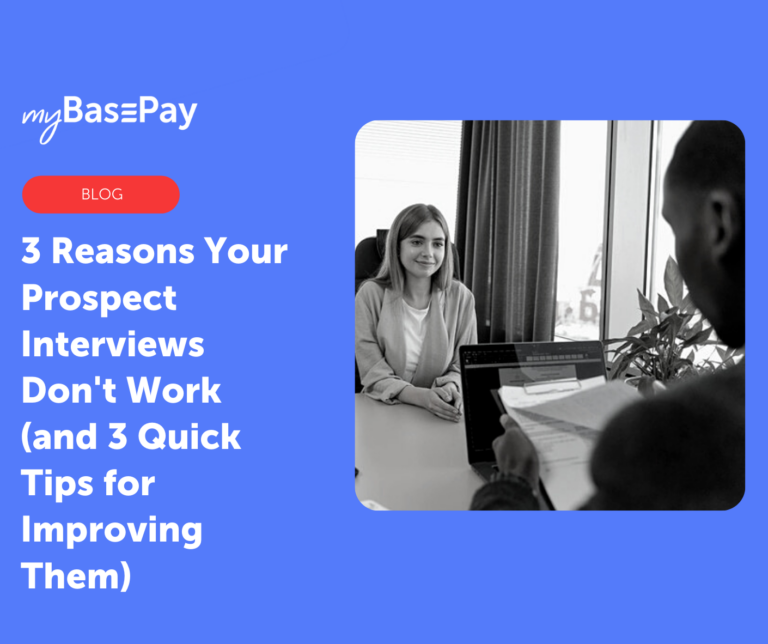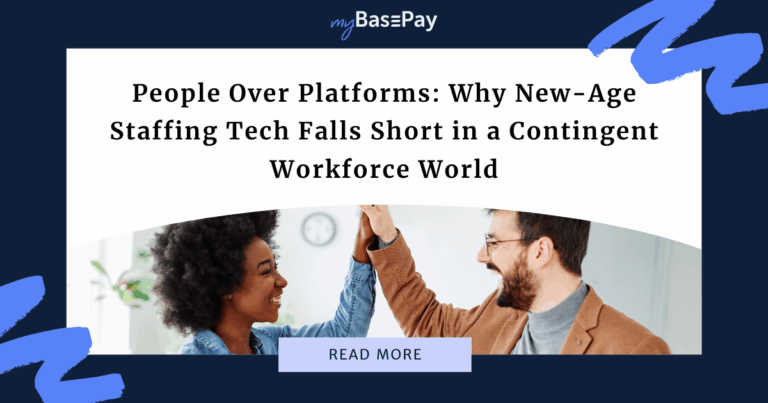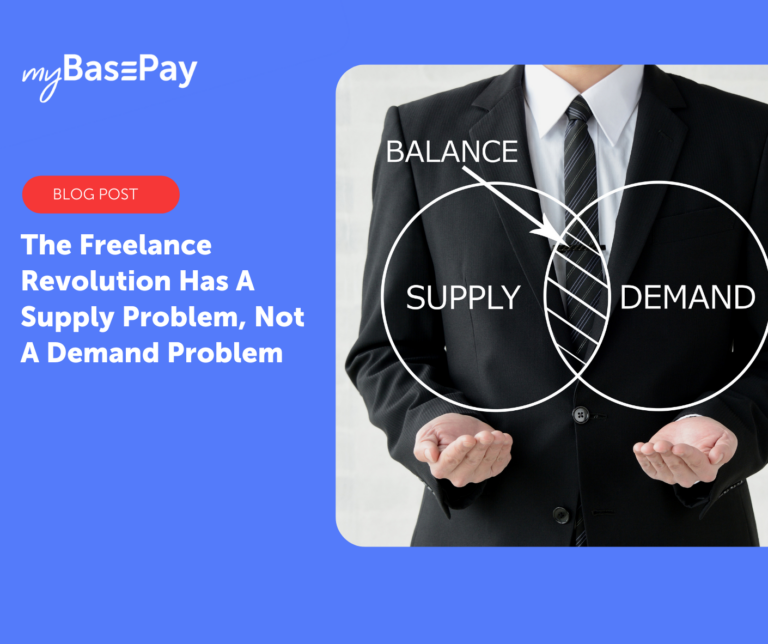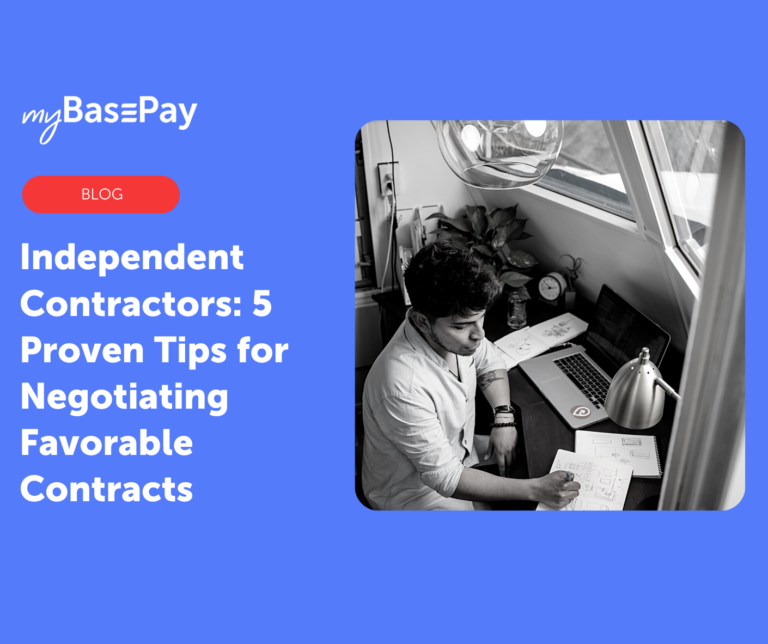How to Put Together a Competitive Benefits Package for Your Contingent Workforce
When it comes to attracting and retaining top contingent talent, your company should provide a competitive benefits package. According to TeamStage, 49% of employees leave their job due to a lack of valuable benefits, and 51% said they consider a benefits package to be crucial in retention efforts.
Unfortunately, this is a dilemma that plagues many businesses, leaving over 20% of companies empty-handed when it comes to offering a benefits package. Benefits are no longer seen as a luxury — it’s become a top priority.
A competitive benefits plan is essential for becoming the main employer of choice. Not only would it give your company an advantage in the recruitment process, but it also motivates the most skilled workers to stay with your company.
With people looking to return to the workforce after the pandemic, a few additional benefits have been added to the list, such as increased healthcare, childcare, family benefits, remote or flexible work options, and additional lifestyle benefits.
As the battle for acquiring top talent ensues, companies have the responsibility to create competitive benefits packages that make high-level talent contractors say yes without hesitation. Here’s how to create a competitive benefits package to retain and attract top-talent contingent workers.
Building a Competitive Employee Benefit Package
What your company’s benefits plan looks like will vary from other businesses. Not all companies are alike, and size, location, and budget all factor into creating a competitive benefits package.
So, where to start? First, gather relevant information.
Conduct surveys on your current workforce to see if you’re offering the kinds of benefits they want. Study up on your industry, measure competitors’ benefit plans, and determine how yours matches up.
Additionally, you should take some time to review your company goals, culture, and staffing needs. Not only will this help you determine what kinds of candidates to hire, but also further allow you to explore which benefits those types of workers are searching for.
Understand Legally Required Benefits
As an employer in the United States, there is a set standard of benefits that your company is required to provide. The Department of Labor outlines these benefits, including worker’s compensation, Social Security, Medicare, FICA, time off to vote, serve on a jury, and perform military service, family and medical leave (FMLA), unemployment insurance, and healthcare insurance.
These are benefits required by federal law, but there are also several state insurance mandates that you should be aware of which depend on your company’s state of residency.
Failure to abide by these required benefits can result in penalties and fines. The cost and length of penalties will vary according to the time period in which the employees did not receive their legally required coverage.
Not only will such non-compliance become expensive, but it will also cause significant damage to your company’s reputation. These requirements are key components of your benefits package, and understanding the laws that mandate employee benefits can help you budget and plan accordingly.
Consider Voluntary Benefits
Once you’ve determined all the legally required benefits for your company, you should turn your attention to voluntary benefits. Also known as supplemental benefits, voluntary benefits are those provided by employers, often in effort to attract and retain workers, mitigate taxes, and increase overall morale.
From increased health coverage to additional lifestyle benefits, these types of benefits cover a wide range. Since your company is eligible for group pricing discounts, they’re typically cheaper for workers to receive through an employer.
Paid-Time Off
Since the pandemic, both employers and employees have shifted their outlook on company benefits plans. After many people were let go from their jobs, they’ve now returned to the workforce with new insights into the most valuable benefits.
Perhaps one of the most highly requested voluntary benefits is paid time-off (PTO). Over the last few years, competitive employers have been extending their PTO, with some even offering unlimited PTO.
Unlimited PTO doesn’t mean workers can show up at will or not at all; it simply means employees are expected to perform their duties and fulfill projects as required, with the additional benefit of submitting time-off requests whenever they deem necessary.
Additionally, the need for PTO has been directly linked to improving mental health plans. Between 2021 and 2022, an increased focus on preserving mental health led to employees requesting a more extensive PTO plan. To support their workers, companies added several more PTO days to workforce calendars, as well as the option to rollover more PTO days.
Access to a Retirement Savings Plan
Even amongst the contingent workforce, access to a retirement savings plan has become another highly-demanded benefit. Besides its advantages for employees, a retirement plan also offers significant benefits to your business — particularly related to recruitment, retention, and tax relief.
Offering retirement plans allows you to invest in the future of your company’s financial security.
Not only are tax credits and deductibles available to companies who start retirement plans, but these plans can also attract and increase retention efforts for top-tier employees. Additionally, you and your employees can receive other incentives that help reduce company costs.
Offering Flexible Schedules and Locations
Before the pandemic, remote work schedules were a rare luxury, often dismissed as unnecessary for most businesses. In the post-pandemic workforce, most employees have experienced first-hand the benefits of flexible work schedules, and the majority are requesting that some sort of remote work model become the norm.
Thousands of statistics point to remote work becoming the preferred method of operations by the end of the year — and for the foreseeable future. By the end of 2022, approximately 25% of the US workforce will be working remotely, and projections indicate that 70% of the workforce will be at least partially remote by 2025.
While this benefit might not be possible for every type of organization, it’s worth assessing your flexible work options, your company needs, and whether a remote work model will work for you.
Solicit Employee Feedback
When assembling a competitive benefits package for your contingent employees, it’s worth asking for feedback. Understanding the needs and wants of your existing workforce will better help you create a benefit plan to attract and retain new talent.
Whether that means holding employee meetings, conducting surveys, or offering idea boxes, allow your workers to submit their thoughts, ideas, and opinions on your organization’s benefit plans.
As you look to strengthen your benefits packages, keep in mind that this is a candidate-driven market, and companies that offer the most appealing compensation and benefit plans will likely be the ones who acquire the most talented workers.
Author: Cesar Jimenez, myBasePay CEO
Cesar A. Jimenez is an entrepreneur, investor, and military veteran with over 25 years of staffing industry expertise successfully leading technology staffing organizations. His expertise in the IT industry allows him to use his experience as a thought leader for talent acquisition, staffing, IT, and recruitment technologies with a passion for contingent workforce solutions. Cesar has held various leadership roles for both a global staffing organization and technology solutions companies. This expertise has enabled him to develop alternative workforce models that provide the agility for organizations to be competitive in today’s marketplace. In his spare time, he enjoys spending time with hisfamily, working out, and coaching high school baseball players.






